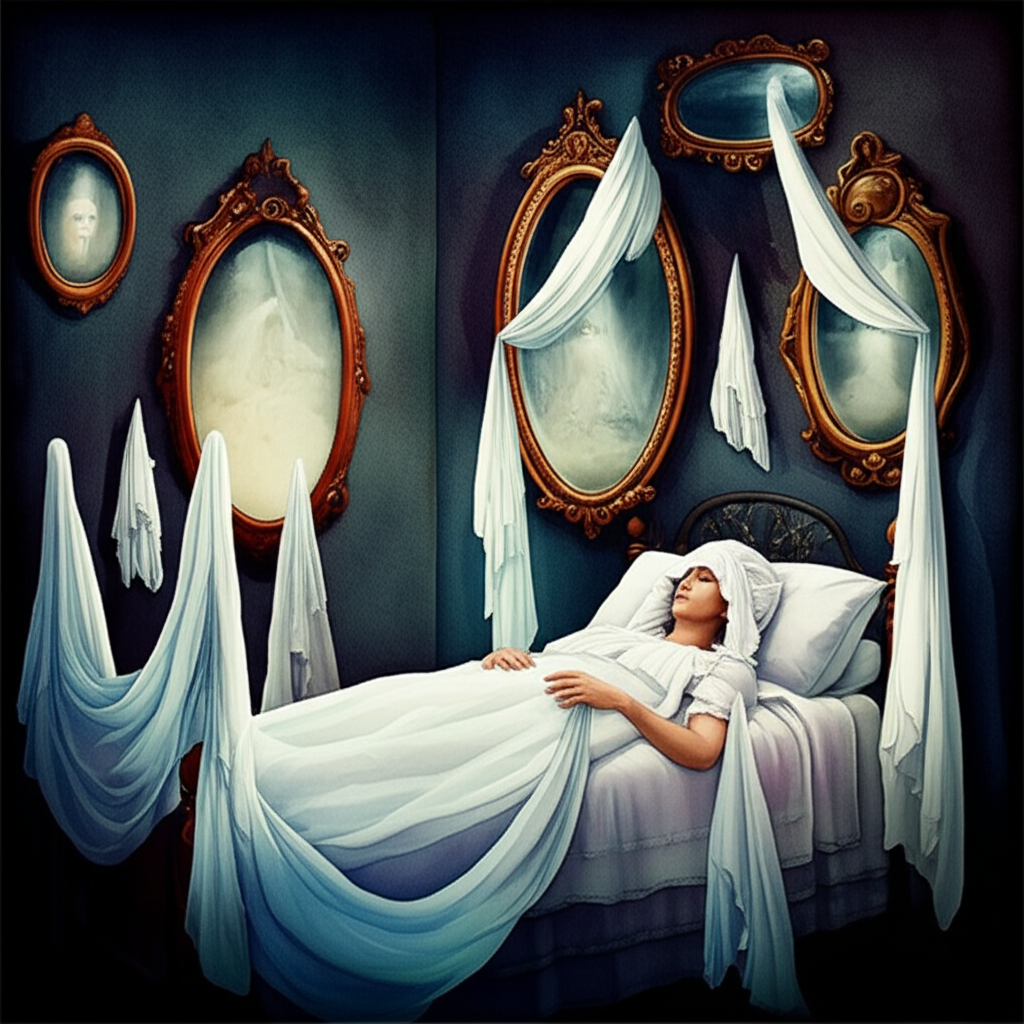
The practice of covering mirrors after a death in the home is a long-held superstition rooted in historical beliefs about the soul, reflections, and the spirit world. This custom, once widespread, reflects anxieties surrounding death, the vulnerability of the soul, and the potential for supernatural interference.
The earliest origins of this superstition can be traced back to the 16th century, a period deeply influenced by religious beliefs and superstitions. Mirrors were not simply reflective surfaces; they were viewed as portals, gateways to an unnatural realm often associated with the Devil. Staring at one’s reflection for an extended period was considered an act of vanity, potentially inviting a glimpse of Satan himself standing nearby. The perceived danger was amplified by the belief that one’s reflection was, in some ways, an embodiment of the soul.
The fear surrounding mirrors intensified during times of bereavement. It was believed that the soul, being temporarily detached from the body during the grieving period, became vulnerable to capture. The departing spirit of the deceased, or even the Devil, could potentially snatch the soul through the mirror. Furthermore, there was concern that while one’s soul was trapped within the looking glass, the body became susceptible to possession by another spirit. This combination of fears seemingly fueled the custom of covering mirrors in a house where someone had died.
The earliest documented reference to this practice dates back to the 1780s, and it appears to have been prevalent throughout the 19th century and remained common into the early 20th century. The Scottish anthropologist, Sir James George Frazer, offered a comprehensive explanation in his 1911 study of mythology, The Golden Bough. Frazer suggested that the practice stemmed from the fear that the soul, projected as a reflection in the mirror, could be seized by the lingering ghost of the deceased.
Beyond the fear of soul capture, other related beliefs existed. One variation held that looking into a mirror in a room where someone had recently died would reveal an apparition of the corpse looking over your shoulder in the reflection. This belief was widespread in both Europe and America, highlighting the use of mirrors as potential ghost traps. In New Orleans, a voodoo technique involved positioning a large mirror in a doorway to ensnare unsuspecting spirits. The ghost, mistaking the reflection for an open room, would enter the mirror and become trapped behind the glass forever.
While the overt superstitions surrounding mirrors and death have waned in modern times, the practice of covering mirrors occasionally persists. It’s often interpreted as a sign of respect for the deceased, a way to protect the living from negative energy, or simply a tradition passed down through generations. Regardless of the specific rationale, the superstition serves as a tangible link to historical anxieties and beliefs about the fragility of life, the vulnerability of the soul, and the enduring power of the spirit world.